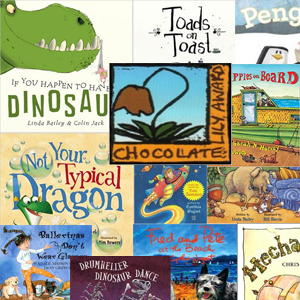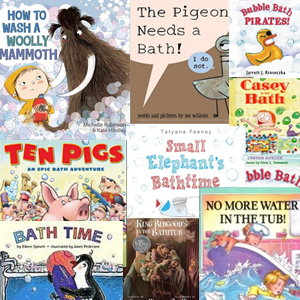Supporting History Units – Connecting Historical Fiction with Primary Sources
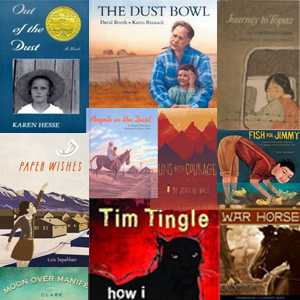
The Library of Congress Primary Sources : The Dust Bowl |
||
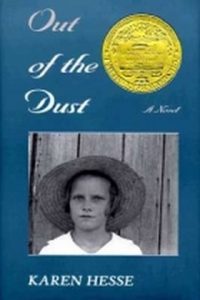 |
Out of the Dust By: Karen HesseIn a series of poems, fifteen-year-old Billie Jo relates the hardships of living in Oklahoma during the dust bowl years of depression. Ages 10-14 |
|
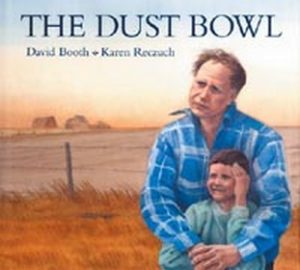 |
The Dust Bowl By: David BoothConditions are dry on Matthew’s grandfather’s farm, and when Matthew asks if the farm will have to be sold, his grandfather tells him the story of how their family stayed through the Big Dry, also known as the Dust Bowl. Ages 5-9 |
|
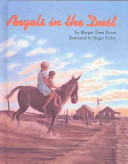 |
Angels in the Dust By: Margot Theis RavenGreat Grandma Annie reminisces about life on her family’s Oklahoma farm during the terrible drought of the 1930s when the region was known as the “Dust Bowl.” Ages 7 and up |
|
The Library of Congress Primary Sources : Japanese American Internment: |
||
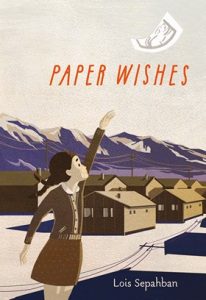 |
Paper Wishes By: Lois SepahbanNear the start of World War II, young Manami, her parents, and Grandfather are evacuated from their home and sent to Manzanar, an ugly, dreary internment camp in the desert for Japanese-American citizens. Ages 9-12 |
|
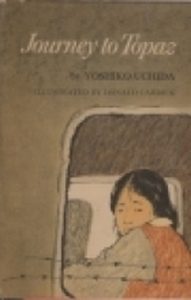 |
Journey to Topaz: a story of the Japanese-American Evolution By: Yoshiko UchidaAfter the Pearl Harbor attack an eleven-year-old Japanese-American girl and her family are forced to go to an aliens’ camp in Utah. Ages 9-12 |
|
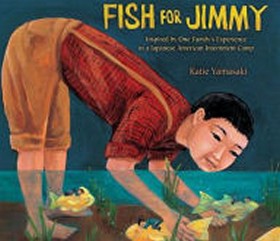 |
Fish for Jimmy: inspired by one family’s experience in a Japanese American internment camp By: Katie YamasakiWhen brothers Taro and Jimmy and their mother are forced to move from their home in California to a Japanese internment camp in the wake of the 1941 Pearl Harbor bombing, Taro daringly escapes the camp to find fresh fish for his grieving brother. Ages 6-9 |
|
The Library of Congress Primary Sources : World War I |
||
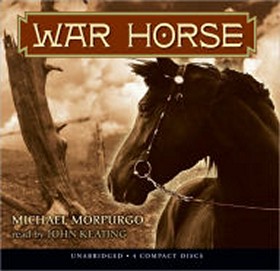 |
War Horse By: Michael MorpurgoJoey the horse recalls his experiences growing up on an English farm, his struggle for survival as a cavalry horse during World War I, and his reunion with his beloved master. Ages 8-12 |
|
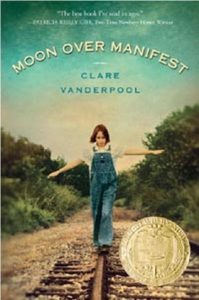 |
Moon Over Manifest By: Clare VanderpoolTwelve-year-old Abilene Tucker is the daughter of a drifter who, in the summer of 1936, sends her to stay with an old friend in Manifest, Kansas, where he grew up, and where she hopes to find out some things about his past. Ages 10-14 |
|
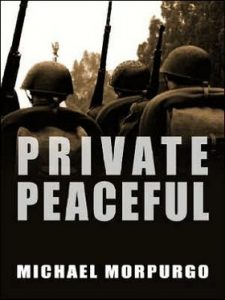 |
Private Peaceful By: Michael MorpurgoWhen Thomas Peaceful’s older brother is forced to join the British Army, Thomas decides to sign up as well, although he is only fourteen years old, to prove himself to his country, his family, his childhood love, Molly, and himself. Ages 10-14 |
|
The Library of Congress Primary Sources : WWII |
||
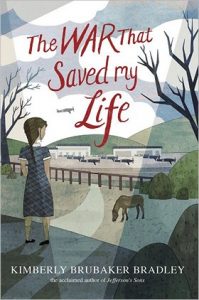 |
The War That Saved My Life By: Kimberly BrubakerBradleyA young disabled girl and her brother are evacuated from London to the English countryside during World War II, where they find life to be much sweeter away from their abusive mother. Ages 8-12 |
|
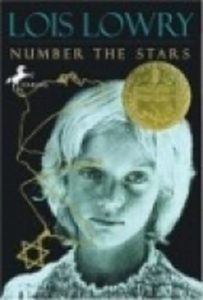 |
Number the Stars By: Lois LowryTen-year-old Annemarie Johansen and her best friend Ellen Rosen often think of life before the war. It’s now 1943 and their life in Copenhagen is filled with school, food shortages, and the Nazi soldiers marching through town. When the Jews of Denmark are “reLCated,” Ellen moves in with the Johansens and pretends to be one of the family. Soon Annemarie is asked to go on a dangerous mission to save Ellen’s life. Ages 9-12 |
|
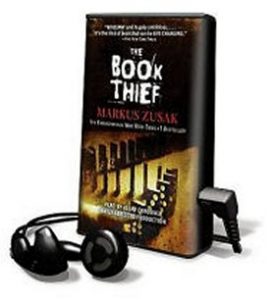 |
The Book Thief By: Markus ZusakTrying to make sense of the horrors of World War II, Death relates the story of Liesel–a young German girl whose book-stealing and story-telling talents help sustain her family and the Jewish man they are hiding, as well as their neighbors. Ages 13 and up |
|
The Library of Congress Primary Sources : The Indian Removal Act/Native Americans: |
||
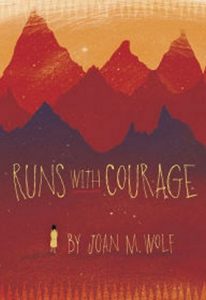 |
Runs with Courage By: Joan M. WolfIn the Dakota Territory in 1880, Four Winds, a ten-year-old Lakota girl, is taken from her family to a boarding school, where she is taught English and expected to assimilate into white culture. Ages 9-12 |
|
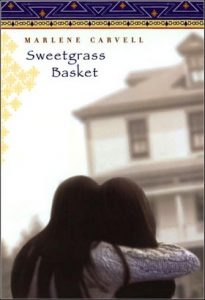 |
Sweetgrass Basket By: Marlene CarvellIn alternating passages, two Mohawk sisters describe their lives at the Carlisle Indian Industrial School, established in 1879 to educate Native Americans, as they try to assimilate into white culture and one of them is falsely accused of stealing. Ages 9-12 |
|
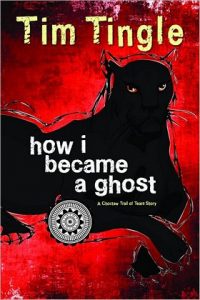 |
How I Became a Ghost By: Tim TingleA Choctaw boy tells the story of his tribe’s removal from its Mississippi homeland, and how its exodus to the American West led him to become a ghost –one able to help those left behind. Ages 8-12 |
|

